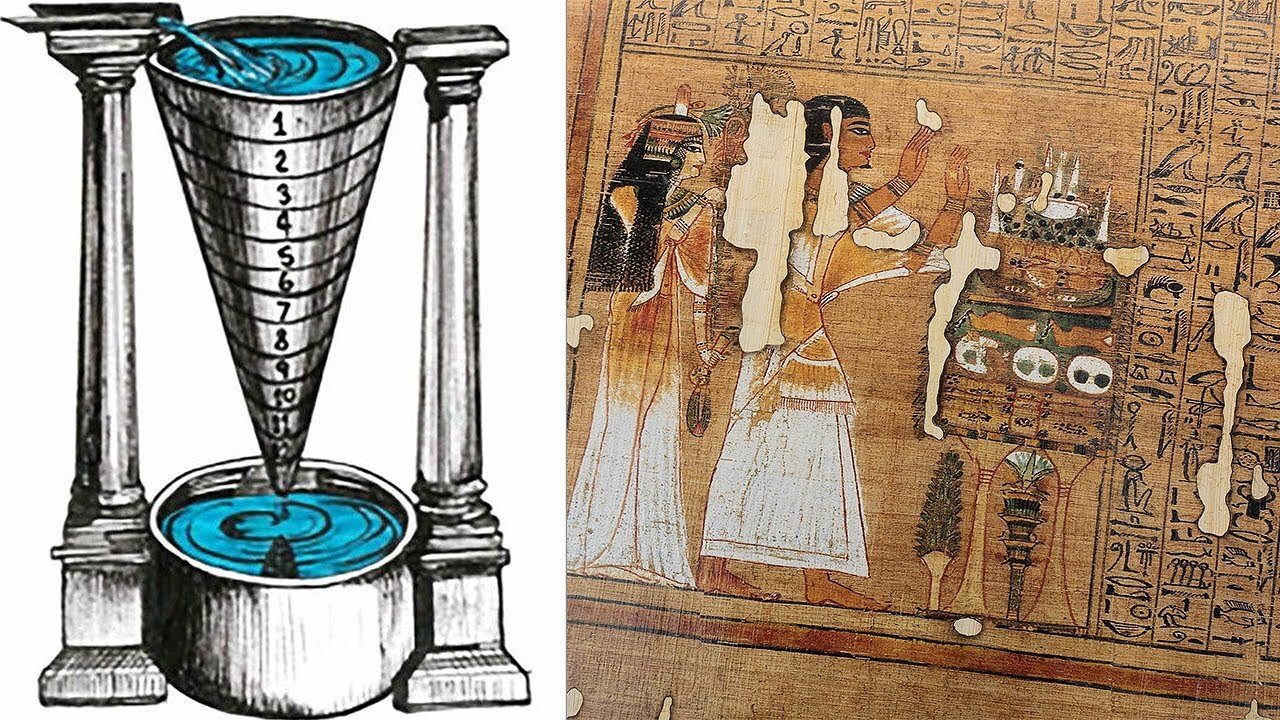Premium Only Content

Ancient Inventions We STILL Use Today
"From water clock alarms, to the literal wheel, these are Ancient Inventions We Still Use Today !
HEY YOU ! There are more awesome videos being made every week, like and subscribe to World Unearthed so you don't miss a beat !
4. Compass
Before the compass was invented, travelers could only get directions by using the stars and the sun. Objects have been discovered that were possibly used to determine direction. These resemble some sort of crystal that reflected the sun’s rays. Overall, travelling a certain direction was tricky back then.
The compass was invented in China, during the Han Dynasty, sometime in between 2 B.C. and 1 A.D. The device was magnetic, and its use was intended for fortune-telling, not navigation. The first compasses were built with a magnetite mineral called Iodestone, which naturally lined up with the earth’s magnetic poles. The Chinese were unaware that they had built a device that would change navigation forever.
3. Julian Calendar
In 45 BCE, Julius Caesar proposed a new, simpler way to determine days, weeks and months within a single year. Up until then, the most common used calendar was the Lunar, or Roman, calendar. The Lunar calendar was based completely off of moon phases. In order to tell what season it was, a group of educated people always had to get together and calculate information like equinoxes. They had to ensure that they were keeping up with what time of year it actually was. At these meetings, a random adding or subtracting of days would happen often. The Lunar calendar was not very accurate and often changed throughout the year. Julius Caesar knew that there had to be a more concrete, consistent way of labeling a full-length year.
Caesar’s inspiration came from the real mastermind behind his new calendar, an Alexandrian astronomer named Sosigenes. Rather than be based off of moon phases, the new calendar would be based off of something easier to track: the amount of times the Earth revolves around the sun. It was simpler because every day, without fail, the sun rises and sets with a long dark period in between.
2. The Wheel
Many history books credit the wheel as being the most important invention in world history. Without it, nearly all technological advancements and everyday domestic work would be utterly impossible. While the wheel is most commonly used for transportation now, it didn’t always start that way.
It is supposed that the first wheel was invented in Mesopotamia in 3500 B.C. for pottery. Pottery was a huge part of the culture and income for the Middle East during this time, so it makes sense that a potter would invent something to make his daily work a little more doable. Fast forward to the end of the same century, and ancient civilizations began using them on chariots. This is where people’s brains literally started spinning when they thought of all the possible uses of a wheel. The list is endless: transportation, wheelbarrows, building and construction tools, mythological devices, and the bicycle are all just small examples of how wheels were implemented into society.
The oldest wheel to date, however, was discovered in Ljubljana, Slovenia in the year 2002. After a radiocarbon dating test, the results came back showing that the wheel was at least 5,000 years old. The wheel is wooden and is assumed to have been used on a simple pushcart. A replica of it is on display at the Ljubljana City Museum in Slovenia.
1. Sewers and Sanitation
Before sewage and sanitation systems existed, unfortunate sights and smells decked the streets of Europe. It was very common, and most people didn’t even think twice about it until sickness and diseases grew rampant. One of the first sewage and sanitation systems was invented in Ancient Rome, and it consisted of latrines that emptied out into the rivers in the city. There was no technical “flushing”; people would use water from Rome’s famous aqueducts and water storage facilities, and the waste would flush down onto the street and into nearby streams or rivers.
Later, the Romans built underground channels for the waste to drain into, so that it stayed off the streets. These underground spaces would be covered up with stones, in an effort to keep the smell away. Rome’s water supply was so abundant that citizens had no problem hand-carrying their waste in a bucket to a designated latrine. However, sometime around AD 100, efforts were made to put a private sewage system in every Roman household.
Ancient Rome is credited with developing the first recognizable sewage system. Other civilizations had their own way to developing systems. These systems probably were not as straightforward or successful because water is crucial to successfully cleaning the streets. In our modern world, sewage is less of a problem thanks to technological innovation. I think we are all grateful for that."
-
 10:53
10:53
World Unearthed
1 month agoThe JFK Files (Declassified) | Part I
1031 -
 LIVE
LIVE
BonginoReport
50 minutes agoThe War on Boys - Early Edition With Evita (Ep.165) - 03/21/2025
20,944 watching -
![🔴[LIVE TRADING] Market Open Chaos (Quad Witching Edition) || The MK Show](https://1a-1791.com/video/fww1/15/s8/1/G/V/W/u/GVWuy.0kob-small-The-MK-Show-Mar.-21st.jpg) LIVE
LIVE
Matt Kohrs
9 hours ago🔴[LIVE TRADING] Market Open Chaos (Quad Witching Edition) || The MK Show
653 watching -
 LIVE
LIVE
Wendy Bell Radio
4 hours agoTRUMP IS ON FIRE
6,871 watching -
 LIVE
LIVE
AP4Liberty
1 hour agoHas Bill Burr Gone Woke?
8,062 watching -
 LIVE
LIVE
The Chris Salcedo Show
12 hours agoKicking Failed & Unwelcomed Government Out Of Education
857 watching -
 27:49
27:49
The Brett Cooper Show
20 hours ago $18.37 earnedCan b00bs Save The Planet? | Episode 15
64.8K158 -
 LIVE
LIVE
Jeff Ahern
42 minutes agoFriday Freak out With Jeff Ahern (6am Pacific)
345 watching -
 11:50
11:50
Dr. Nick Zyrowski
18 hours ago10 Signs That Your Gallbladder Is In Danger
20.9K4 -
 9:15
9:15
Rethinking the Dollar
11 hours agoThis Is What Financial Collapse Looks Like (Debt Delirium 2025)
13.6K10